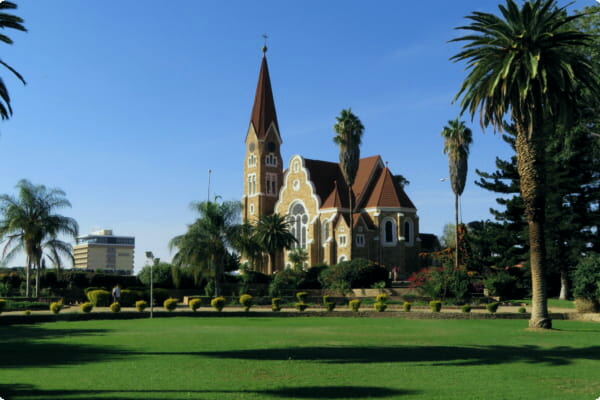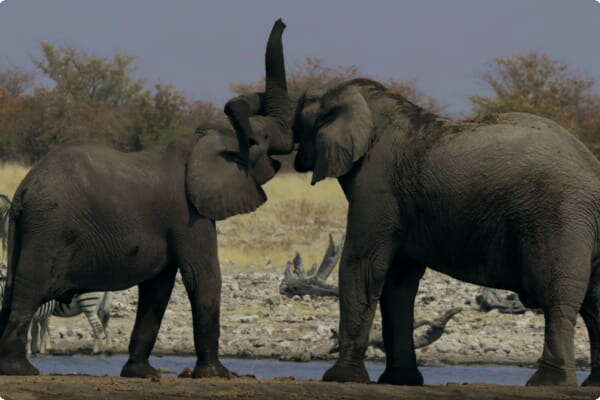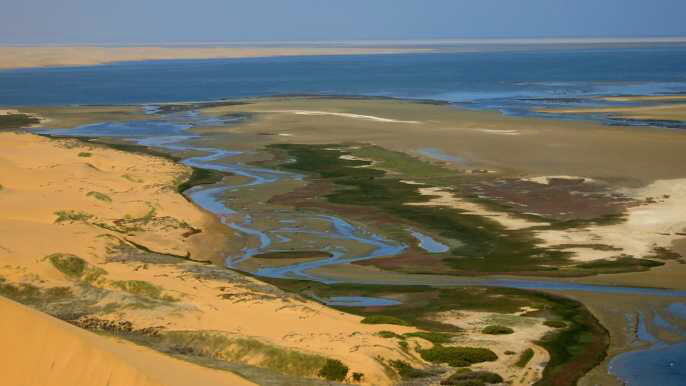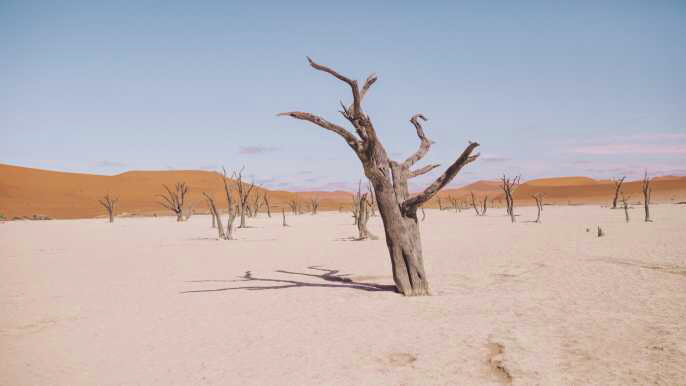Located in southwest Africa, Namibia is a country that is known for its diverse wildlife and stunning landscape. Its Namib Desert runs along the Atlantic coast. The country has a large cheetah population, as well as giraffes and rhinos. It also has a capital city, Windhoek, which is home to many German colonial-era buildings.
Sossusvlei
Located in the Southern Namib Desert in Namibia, Sossusvlei is one of the most beautiful places in Namibia. It is an area of red dunes that formed 15 million years ago. This area is a unique and remote place to explore.
The Sossusvlei area is home to a wide variety of wildlife. Many of these animals live in the dunes. Other animals may be found in the surrounding desert. Some animals may include antelopes, snakes, hyenas, rodents, and even jackals.
Sossusvlei is best explored in the morning. The main gate opens at sunrise and closes at sunset. If you are planning to visit Sossusvlei in the morning, be sure to carry a water bottle and sun block. Wearing flip-flops is not a good idea in the hot desert sun.
One of the most popular things to do in Sossusvlei is to climb the dunes. The dunes are the highest in the world and are an impressive sight to see. If you climb the sand dunes, you will have the opportunity to enjoy the beautiful scenery. There are several different slopes to climb.
For those not planning on climbing the dunes, there are other activities to enjoy. These include the walking pan, which is marked with signs. This walk is about 1 hour long. There is also the option of hiring a guide to take you around the pan.
Spitzkoppe
Located in the Erongo Region of Namibia, Spitzkoppe is one of the most recognizable landmarks in Namibia. It is made up of a cluster of granite peaks that stand above the flat desert plains, like a beacon.
Spitzkoppe is one of the most beautiful places to visit in Namibia. Its peaks tower over the desert plains and are great for hiking or rock climbing. It is also a place of solitude.

The mountain range is a fine example of an inselberg. Its shape was formed by erosion and volcanic activity. It is made of 120 million year old granite. It has been called the Matterhorn of Namibia.
The mountain is one of the most photographed mountain motifs in Namibia. The rock formations are interesting and perfect for photography. It offers sunrise and sunset viewing opportunities. There are also several bird species that can be found here. It is also a great place to watch the colours change.
The granite peaks of Spitzkoppe are very popular with rock climbers. They stand 700 meters above the desert. The mountain has an overall height of 1728 meters. It is easy to get to Spitzkoppe by sedan car. The road is well maintained.
Spitzkoppe is also home to several birds, including the rosy-faced lovebird, booted eagle, and augur buzzard. Several rock paintings are also located in the area. Some of these paintings are damaged, but others are still very well preserved.
Skeleton Coast
Located in the northwestern part of Namibia, the Skeleton Coast is one of the most fascinating places in the country. This wild, arid area of the country is home to a wide variety of plants and animals. Some of these animals include black rhinoceros, lions, springbok and giraffe.
Most of the animals living in the Skeleton Coast have adapted to their harsh environment. Among the larger mammals are springbok and black backed jackal. They dig holes in the dry riverbeds to get water.
The Skeleton Coast is home to an abundance of fish. This makes it a great place to fish. There are also a number of shipwrecks in the area. These are difficult to reach and only a few tourists have been able to get a glimpse of them.
There are two ways to explore the Skeleton Coast. You can drive along the coast, or you can take a plane tour. You should stick to the designated tracks.
The most common species of animals living in the Skeleton Coast are black backed jackal, brown hyena and gemsbok. They have adapted to their harsh environment by digging holes in the dry riverbeds to get enough water.
The Skeleton Coast is also home to an abundance of birds and insects. It is also home to whale bones and vertebrae.
The Skeleton Coast is also an extremely dangerous area. There is a strong current that flows along the Namibian coast. The Benguela Current is a current that sweeps up from Antarctic waters. The current is strong enough to pull ships whole.
Etosha National Park
Located in northern Namibia, Etosha National Park is one of the best places to see wildlife in Africa. Etosha is home to many animals including the lion, elephant, rhino and leopard.
Etosha National Park is a malaria free zone and has a great infrastructure. You can hire a 4x4 vehicle or self drive. Etosha is known for its epic game drives. A guide is recommended for best animal spotting opportunities.

The park's water holes attract a wide variety of animals including lions, leopards, elephants and rhino. The dry season is the best time to visit the park. The climate is warm and dry during this time.
The Etosha landscape consists of salt pans, mud flats, thorny scrub and low-lying vegetation. This makes it easy to spot animals. It is not difficult to see lions, leopards, elephants, rhinos and springbok.
Etosha is best visited during the dry season from May to October. This is the best time to visit the park because the animals tend to flock to the few remaining waterholes.
The pan is also a great place to see flamingos. The pan is made up of cracked salt and sometimes it is full of water. In the summer months, it becomes a sparkling oasis for birdlife.
Etosha is also home to the black rhino. Namibia's rhino conservation program is considered one of the best in the world.
Namib-Naukluft National Park
Among the top tourist destinations in Namibia, Namib-Naukluft National Park has a unique landscape of sand dunes. It is one of the largest nature conservation areas in Africa. Its arid landscape has a lot of variety and is great for wildlife viewing. It offers a great variety of activities including hiking, camping and 4x4 driving.
Naukluft Mountains are a rugged escarpment that formed approximately 500 to 600 million years ago. The mountains are formed of porous dolomite and limestone rock. They rise over 1,000 feet (300 m) above the surrounding gravel plains. They are home to a large wetland site for resident and migratory birds.
Naukluft is known for its unusual plant life and animal species. It supports an amazing variety of flora, including euphorbia plants, quiver trees, acacia plants and distinctive acacia.
A major attraction of the park is Sossusvlei. It is one of the most beautiful desert landscapes in the world. It is a great place to hike and climb sand dunes. It is also known for its salt pans. It is a great place to see herds of oryx.
Another area worth a visit is Sesriem Canyon. This canyon is carved by the Tsauchab River and is about 100 feet (30 m) wide. It is not as grand as Sossusvlei, but it is still worth a visit.
Naukluft is one of the best places to go for hiking. There are hundreds of scenic trails that can be accessed through the park. The park offers a range of multi-day 4x4 trails. It is also possible to camp in the desert. It is recommended to bring plenty of water and food.
Caprivi Strip
Located in the northeast of Namibia, Caprivi is a region of high rainfall and wildlife. It borders Zambia, Botswana and Angola. Caprivi Strip is known for its wild elephants, buffaloes, hippos and crocodiles. It is a place for nature lovers.
It is also a place for birding enthusiasts. It is home to hundreds of bird species. Caprivi Strip also has several national parks. These include Bwabwata National Park, Mudumu National Park, and Mamili National Park. Guests can see antelope, red lechwe, sitatunga, buffalo and crocodiles.
The region also has a tropical climate. The Caprivi Strip is an area of high rainfall in the summer months. The area is home to several species of wildlife including crocodiles, hippos, elephants, antelope and buffaloes.
The Caprivi Strip was once part of an elephant migration route. But the region has not recovered from years of poaching and wildlife losses. Today, local communities work closely with the Namibian government to preserve the region's natural resources.
Caprivi is also home to several rivers. The Kwando, Linyanti, and Chobe rivers run through the region. The Caprivi Strip receives the highest rainfall in Namibia.
The Caprivi Strip is one of the most interesting places to visit in Namibia. It is also an important region for accessing the Zambezi River. The Caprivi region has a lot of mineral resources. It is also home to several tribes. These include the Masubia, Matotela, and Mashi peoples.






